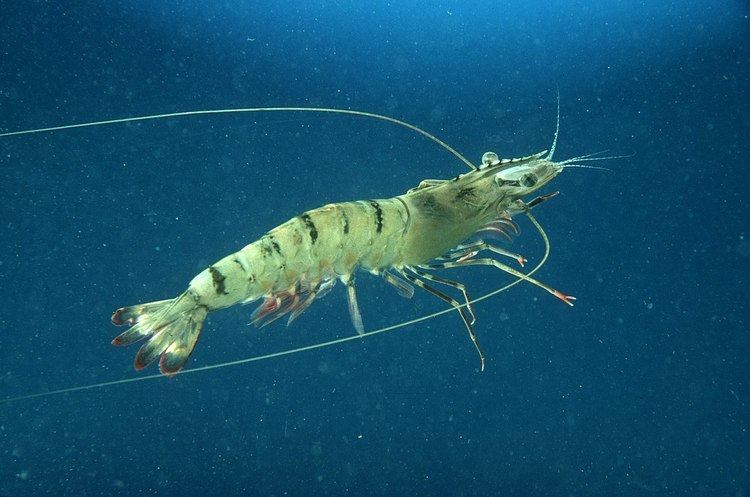 | ||
Eyestalk ablation is the removal of one (unilateral) or both (bilateral) eyestalks from a crustacean. It is routinely practiced on female shrimps (or prawns) in almost every marine shrimp maturation or reproduction facility in the world, both research and commercial. The aim of ablation under these circumstances is to stimulate the female shrimp to develop mature ovaries and spawn.
Contents
Most captive conditions for shrimp cause inhibitions in females that prevent them from developing mature ovaries. Even in conditions where a given species will develop ovaries and spawn in captivity, use of eyestalk ablation increases total egg production and increases the percentage of females in a given population that will participate in reproduction. Once females have been subjected to eyestalk ablation, complete ovarian development often ensues within as little as 3 to 10 days.
The most commonly accepted theory of why eye ablation reduces this inhibition is that a gonad inhibitory hormone (GIH) is produced in the neurosecretory complexes in the eyestalk. This hormone occurs in nature in the non-breeding season and is absent or present only in low concentrations during the breeding season. The reluctance of most shrimp to routinely develop mature ovaries in captivity is a function of elevated levels of GIH, and eyestalk ablation lowers the high haemolymph titer of GIH. The effect of eyestalk ablation is not on a single hormone such as GIH, but rather affects several physiological processes. Besides the GIH evidence, another hypothesis suggests that eyestalk ablation also reduces light intensity and thereby induces ovarian maturation. In the banana prawn (Fenneropenaeus merguiensis, syn. Penaeus merguiensis), dim light favours ovarian maturation and spawning. The exact mechanism of eyestalk ablation on the ovarian maturation is not conclusive.
It has been reported that in the tiger prawn (Penaeus monodon), the eyestalks fully regenerate in less than 6 months.
Effects
There are several direct and indirect effects of eye ablation in female shrimps, including;
Techniques
Techniques for eyestalk ablation include:
- Pinching the eyestalk, usually half to two-thirds down the eyestalk. This method may leave an open wound.
- Slitting one eye with a razor blade, then crushing the eyestalk, with thumb and index fingernail, beginning one-half to two-thirds down the eyestalk and moving distally until the contents of eyes have been removed. This method, sometimes called enucleation, leaves behind the transparent exoskeleton so that clotting of haemolymph, and closure of the wound, may occur more rapidly.
- Cauterizing through the eyestalk with either an electrocautery device or an instrument such as a red-hot wire or forceps. If performed correctly, this method closes the wound and allows scar tissue to form more readily. A variation of this technique is to use scissors or a sharp blade to sever the eyestalk, and then to cauterize the wound.
- Ligation by tying off the eyestalk tightly with surgical or other thread. This method also has the advantage of immediate wound closure.
Anaesthetic
Macrobrachium americanum prawns treated with lignocaine (a local anaesthetic in mammals) prior to eyestalk ablation show less rubbing, flicking and sheltering than those not given the anaesthetic.
